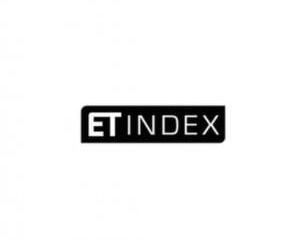

Features
Introduction to ET Index blog series
My name is Sam Gill, CEO of ET Index, a company focused on advancing Environmental Tracking – a stock market incentive mechanism designed to bring about global reductions in carbon emissions by linking company share price to emissions.
I would describe myself as an environmental entrepreneur whose goal is to harness the enormous power commanded by the financial system to tackle climate change. I started my career working at Google, went on the run the not-for-profit Environmental Investment Organisation for 4 years and then co-founded ET Index at the beginning of 2014 with the backing of the Climate KIC, the EU’s flagship climate innovation initiative.
Over the course of this blog series I intend to explore the key issues (as I see them) surrounding the climate change debate and the inevitable shift away from fossil fuels.
The first post will look at the notion of ‘climate risk’. Why should we care about climate change? Why do some renowned scientists believe our current trajectory is not likely to be compatible with global organised society? Next we will move onto ‘carbon risk’. What is the financial argument behind a shift away from high carbon assets and companies? Why do some commentators, including the Governor of the Bank of England, believe the next major bubble building in the economy could be a carbon one?
Once we have looked at the problem, we will turn our attention to financial solutions to deal with it. How are we going to shift the trillions required to make a difference? At the heart of this question lies the following conundrum: are we reducing carbon risk at the individual investor level or climate change risk at the collective aggregate level? In other words, are we really tackling the problem or just sweeping it under the carpet? Given the problem is very much a collective, global one – surely it would be a shame to miss the opportunity to reduce the risk of catastrophic climate change occurring. We will explore one such initiative, Environmental Tracking, in the final post of this series.
We will also look at some of the more technical aspects of the climate change and climate finance related debate. We will explore how greenhouse gas emissions are measured and why a company’s supply chain emissions often represent the greatest source of emissions. Next we will move onto looking at the different ways of measuring a company’s carbon exposure and actions to reduce emissions, and the pros and cons of each. For example, how fossil fuel reserves compare to a company’s carbon emissions; or why measuring a company’s actual emissions might be more important than looking at the amount a company says it is going to cut its emissions by.
Before exploring a concrete mechanism designed to shift capital within the stock market from high carbon to low carbon companies – not just the fossil fuel ones – we will examine the divestment debate. Divestment has been gathering pace across the world (with over 400 institutions now pledged to divest from fossil fuels) and the Guardian taking the bold step to lobby the Gates Foundation and Wellcome Trust to divest from all fossil fuel holdings as part of its Keep in the ground campaign. This is a contentious issue for some within the finance community, especially those who advocate that engaging with companies is a more effective solution. We will explore if these two approaches can be reconciled by employing an approach such as Environmental Tracking (spoiler alert: they can).
Sam Gill is author of Environmental Tracking 3.0 – Does the investment community hold the key to tackling climate change? Available as free PDF or in hard copy from Lulu.


 Environment10 months ago
Environment10 months agoAre Polymer Banknotes: an Eco-Friendly Trend or a Groundswell?

 Environment11 months ago
Environment11 months agoEco-Friendly Home Improvements: Top 7 Upgrades for 2025

 Features9 months ago
Features9 months agoEco-Friendly Cryptocurrencies: Sustainable Investment Choices

 Features10 months ago
Features10 months agoEco-Friendly Crypto Traders Must Find the Right Exchange


























